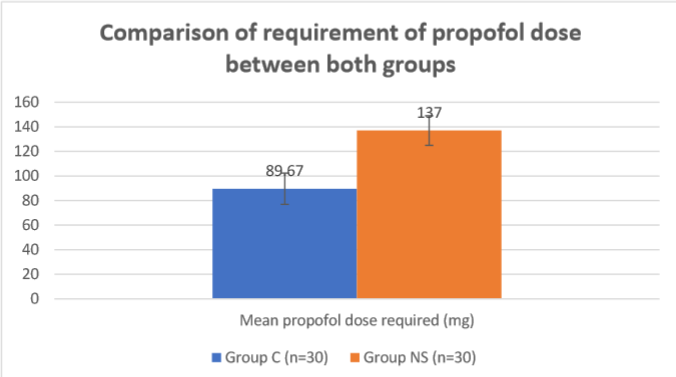Clonidine Infusion as Premedication in Hypertensive Patients: A Randomised Controlled Study
Main Article Content
Abstract
Background and Aims: Integral components of general anesthesia are endotracheal intubation and Laryngoscopy. However hemodynamic responses, such as tachycardia and hypertension, occur immediately and often lasts for 5 to 10 minutes. Hemodynamic responses are exaggerated in hypertensive patients. This study aimed to assess the efficacy of clonidine infusion as a premedication for attenuating hemodynamic reactions of hypertensive patients to laryngoscopy and endotracheal intubation.Methods: This prospective, randomized, controlled study enrolled 60 hypertensive patients of either sex scheduled for surgery under general anesthesia and endotracheal intubation. Patients in clonidine group (C group, n = 30) received intravenous clonidine (4 μg kg-1), diluted in 50 ml normal saline, over 15 minutes by syringe pump pre-operatively, at rate of 200 ml / hr and those in the control group (NS group, n = 30), were given 50 ml normal saline as a placebo in the same manner. The Sedation score of each patient was recorded 15 min after infusion completion. General anesthesia was subsequently given to the patients in both groups in accordance with a prescribed protocol. Hemodynamic parameters were recorded before induction, during laryngoscopy, and at various intervals after laryngoscopy, and statistical analyses were performed. Results: Compared to the control group, the study group had a significantly lower heart rate in all of the recorded readings. There was a significant attenuation of systolic blood pressure and mean arterial pressure in group C compared to those in the NS group. The sedation score after 15 min was significantly higher in Group C than Group NS (p< 0.001). There were no significant variations noticed between the two groups regarding complications that occurred after the operation. Conclusion: Intravenous 4 μg kg-1 clonidine infusion is effective in preventing exaggerated hemodynamic responses during laryngoscopy and tracheal intubation in patients with hypertension.
Article Details
References
Henderson, J. J., Popat, M. T., Latto, I. P. & Pearce, A. C. Difficult Airway Society guidelines for management of the unanticipated difficult intubation. Anesthesia 2004; 59: 675–694.
Acharya N, Routray D. A Prospective Randomized Study of Efficacy of Clonidine in Attenuating Hemodynamic Response to Laryngoscopy and Tracheal Intubation. Ann IntMed Den Res.2017; 3(2): 30-4.
Denlinger, J. K., Ellison, N. & Ominsky, A. J. Effects of intratracheal lidocaine on circulatory responses to tracheal intubation. Anesthesiology 1974; 41: 409–412.
Fassoulaki, A. & Kaniaris, P. Intransal adminstration of nitroglycerine attenuates the pressor responses to laryngoscopy and intubation of the trachea. Br. J. Anaesth1983; 55: 49–52.
Sameenakousar, M. & Srinivasan, K. V. Comparison of fentanyl and clonidine for attenuation of the hemodynamic response to laryngocopy and endotracheal intubation. J. Clin. Diagn. Res. JCDR 2013, 7: 106
Wijeysundera, D. N., Naik, J. S. & Beattie, W. S. Alpha-2 adrenergic agonists to prevent perioperative cardiovascular complications: a meta-analysis. Am. J. Med. 2003;114: 742–752
Collins, S. R. Direct and Indirect Laryngoscopy: Equipment and Techniques. Respir. Care 2014; 59: 850–864.
Giovannitti, J. A., Thoms, S. M. & Crawford, J. J. Alpha-2 adrenergic receptor agonists: a review of current clinical applications. Anesth. Prog. 2015; 62: 31–39.
Kalra, N. K., Verma, A., Agarwal, A. & Pandey, H. Comparative study of intravenously administered clonidine and magnesium sulfate on hemodynamic responses during laparoscopic cholecystectomy. J. Anaesthesiol. Clin. Pharmacol.2011; 27: 344–348.
Madhusudan M, Lavakumar A, Rao MH, Samantaray A, Charupalli K. Effect of intravenous dexmedetomidine on hemodynamic responses to laryngoscopy, tracheal intubation and] anaesthetic and analgesic requirements: a randomized double blind clinical efficacy study. J Clin Sci Res.2016; 5: 205-13.
Nayak, R. R., Vennel, J. E., Patil, A. D. & D’Souza, O. Effect of oral clonidine premedication on perioperative hemodynamic response and post operative analgesic requirements for patients undergoing laparoscopic surgeries. Indian Journal of Anesthesia 2018; 5(4): 610-617.
Altan, A., Turgut, N., Yıldız, F., Türkmen, A. & Üstün, H. Effects of magnesium sulphate and clonidine on propofol consumption, haemodynamics and post-operative recovery. Br. J. Anaesth.2005; 94: 438–441.
Zalunardo, M. P. et al. Cardiovascular stress protection following anesthesia induction. Comparison of clonidine and esmolol. Anaesthesist 2001; 50: 21.
Ray, M., Bhattacharjee, D. P., Hajra, B., Pal, R. & Chatterjee, N. Effect of clonidine and magnesium sulphate on anaesthetic consumption, haemodynamics and post-operative recovery: A comparative study. Indian J. Anaesth. 2010; 54: 137.
Matot, I., Sichel, J. Y., Yofe, V. & Gozal, Y. The Effect of Clonidine Premedication on Hemodynamic Responses to Microlaryngoscopy and Rigid Bronchoscopy. Anesth. Analg. 2000; 91: 828–833.
Aantaa, R. & Scheinin, M. Alpha 2-adrenergic agents in anesthesia. Acta Anaesthesiol. Scand. 1993; 37: 433–448.
Kulka, P. J., Tryba, M. & Zenz, M. Dose-response effects of intravenous clonidine on stress response during induction of anesthesia in coronary artery bypass graft patients. Anesth. Analg. 1995; 80: 263–268.
Mikawa, K. et al. Efficacy of oral clonidine premedication in children. Anesthesiology 1993; 79: 926–931.
Ghignone, M., Calvillo, O. & Quintin, L. Anesthesia and hypertension: the effect of clonidine on perioperative hemodynamics and isoflurane requirements. Anesthesiology 1987; 67: 3–10.
Sarita Ramchandani, Lakra AM, Pratibha Jain Shah, Jaya Lalwani, Sahare KK. Effect of intravenous clonidine premedication for the bloodless surgical field in patients undergoing middle ear or nasal surgery: A comparison of three different doses. Anesthesia Essays and Researches: 2015; Sep-Dec; 9(3): 397–400.

